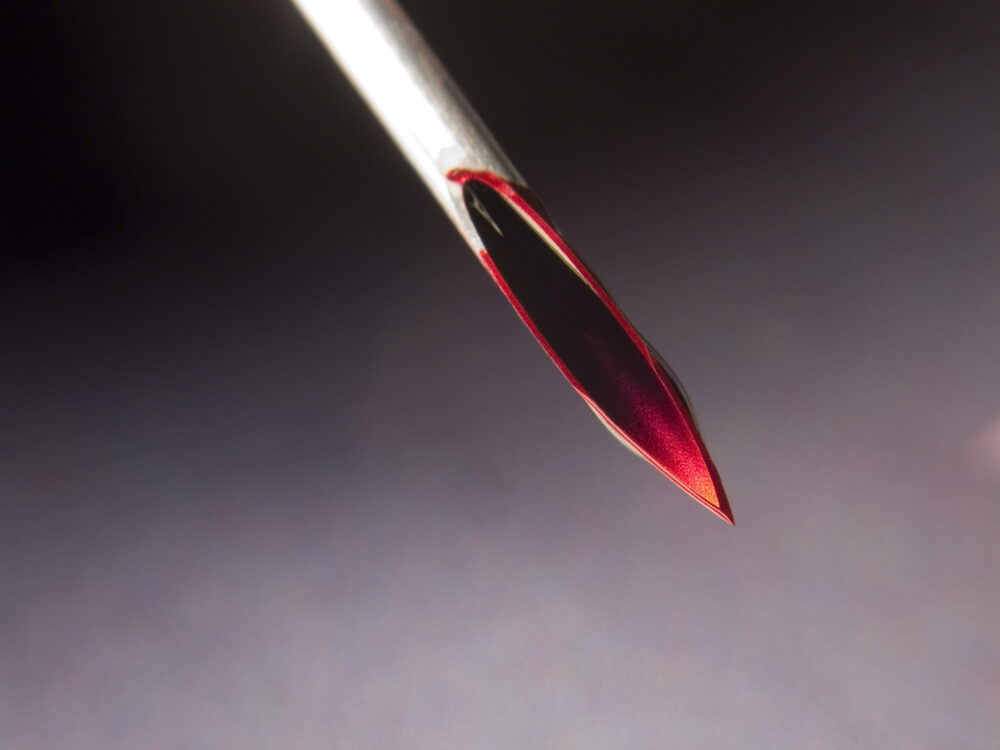Shots are never fun. Many people experience anxiety right up until the needle pierces their skin. According to the Centers for Disease Control and Prevention, the fear of needles prevents people from getting life-saving vaccinations each day. However, advancement in vaccine delivery technology is making it possible to receive these vaccinations without a needle. Transdermal drug delivery systems (TDDS) first surfaced in 1979 when scopolamine patches were approved for motion sickness. Not long after, nicotine patches for smoking cessation and pain relief patches for athletes were formulated. The implementation of these patches has paved the way for the development of dissolvable microneedle patches which are a more efficient, accessible, and painless method of delivering vaccines.
Microneedles are composed of about 100 microscopic cones, each of which is more than 50 times smaller than an inch. These microneedles penetrate the skin and target immune cells directly below the skin. The skin plays a substantial role in pathogenic invasion by governing what can enter and leave the body. By delivering the vaccine directly to the dermis, projections direct vaccine components to lymph nodes, evoking a robust immune response. Microneedle formations are composed of sugar and salt because the skin naturally allows these compounds to enter the body. Vaccine components can be integrated into a sugar and salt solution, dried, and applied to the skin. The moisture in the skin dissolves the microneedles, absorbing the vaccine components. Antigen-presenting cells in the skin recognize foreign particles and activate lymphocytes. These cells latch on and destroy invading pathogens.
Why are dissolvable skin patches so effective when delivering vaccines? Intramuscular vaccination, the prevalent model of vaccination, uses a needle and prevents infections by identifying pathogens that are already inside the body. This is why individuals may get COVID-19 or the flu even after being vaccinated. Microneedle patches are more effective because they block viruses from entering the body by vaccinating through the dermis. Pathogens are neutralized before reaching other tracts in the body. However, if a pathogen gets past the dermal barrier, activated lymphocytes protect the host. In general, dissolvable microneedle patches provide both skin-level protection and whole-body protection. Marianne Chang, a biomedical correspondent for the Korea Biomedical Review, confirmed that, “Abion has been conducting joint research with Raphas, a company specializing in microneedle patches, to immunize its COVID-19 DNA vaccine through portable electroporation by mounting it on microneedle patches.”
The vaccine is administered via electroporation, a technique where high-voltage shocks are applied to cells to allow for the entrance of antibodies, DNA, RNA, and other chemicals. This method is most efficient at 90 volts but causes more pain in patients. Global technology companies including Raphas have conducted tests to verify cell delivery through microneedle vaccine patches such as lower voltages like 25 and 50 volts. In a 2022 study, researchers at Abion and Raphas confirmed antibody production at similar levels to that of traditional needle injection methods in animals. The patches are designed to dissolve within just a few hours to enable a slow release of vaccine components. Intramuscular injections, however, attack the immune system with an entire dose of the vaccine which is why patients may feel swollen and sore. These localized immune responses are also the cause of post-vaccine headaches, runny noses, and sore throats. Through painless microneedle patches, the vaccine is delivered slowly without triggering a major inflammatory response.
Traditional mRNA vaccines are between minus 80 and minus 20 degrees Celsius and require cold chain shipping to ensure the thermostability of the vaccines. This disproportionately affects low-income countries that lack the resources to store the vaccines. Microneedle vaccines are delivered in a dried formulation and do not require special refrigerators, making them exceptionally convenient. These vaccines also use smaller doses and waste fewer supplies. Advancing technology has made it so that future models will not require a clinician to administer the vaccine and can be mailed to and used by patients directly, increasing accessibility to countries around the globe. Microbiologists at Boise State University stated that “dissolvable microneedle skin patches may face challenges to production, as does any new technology, but the benefits are pushing scientists to develop this new platform for vaccine delivery.”
There is still so much left to explore in the field of vaccine delivery technology. Pharmaceutical companies are in the process of developing influenza multivalent vaccines and other chemical drugs. While scientists are making exceptional progress with dissolvable patches, further clinical testing will be key to getting this microneedle technology delivered to homes, schools, workplaces, and more importantly, into arms.
Image courtesy of Wikimedia Commons






